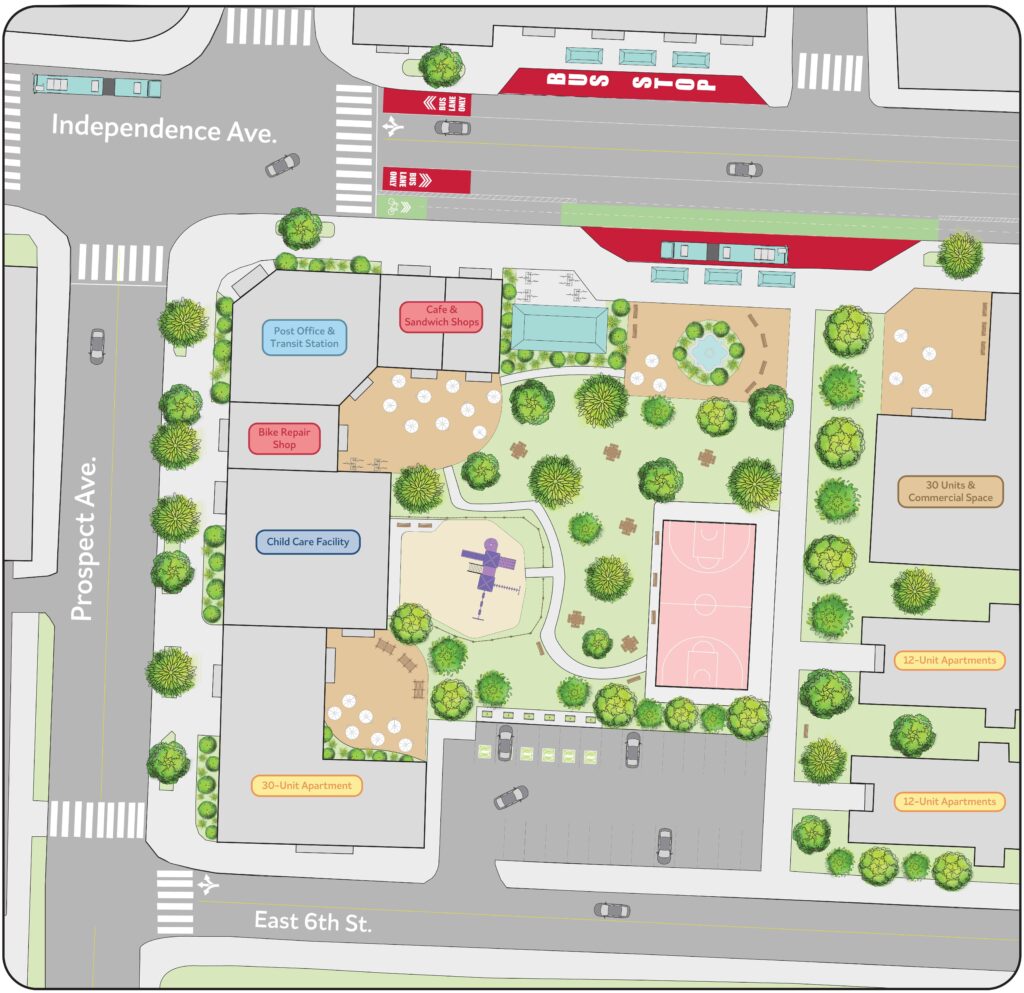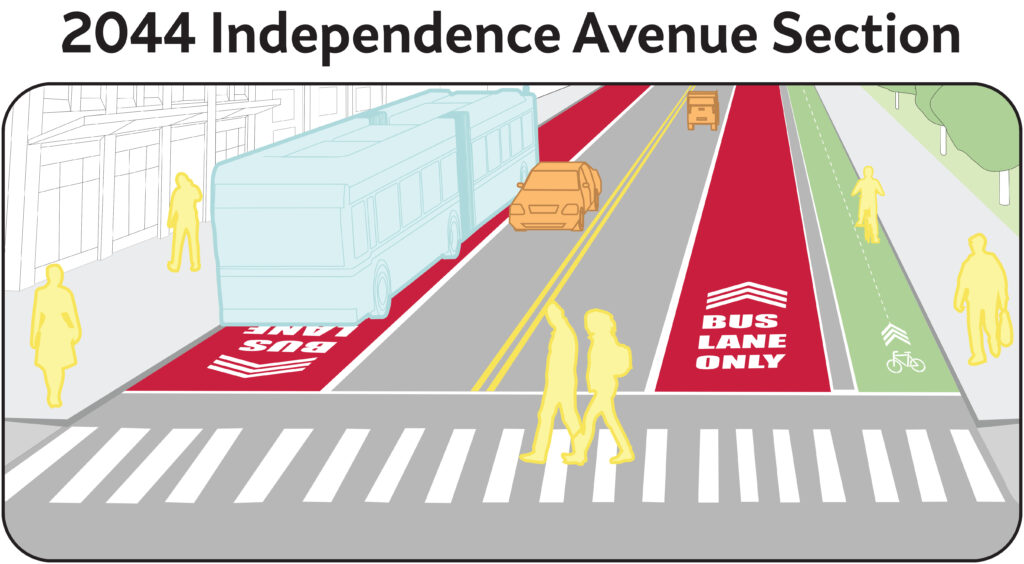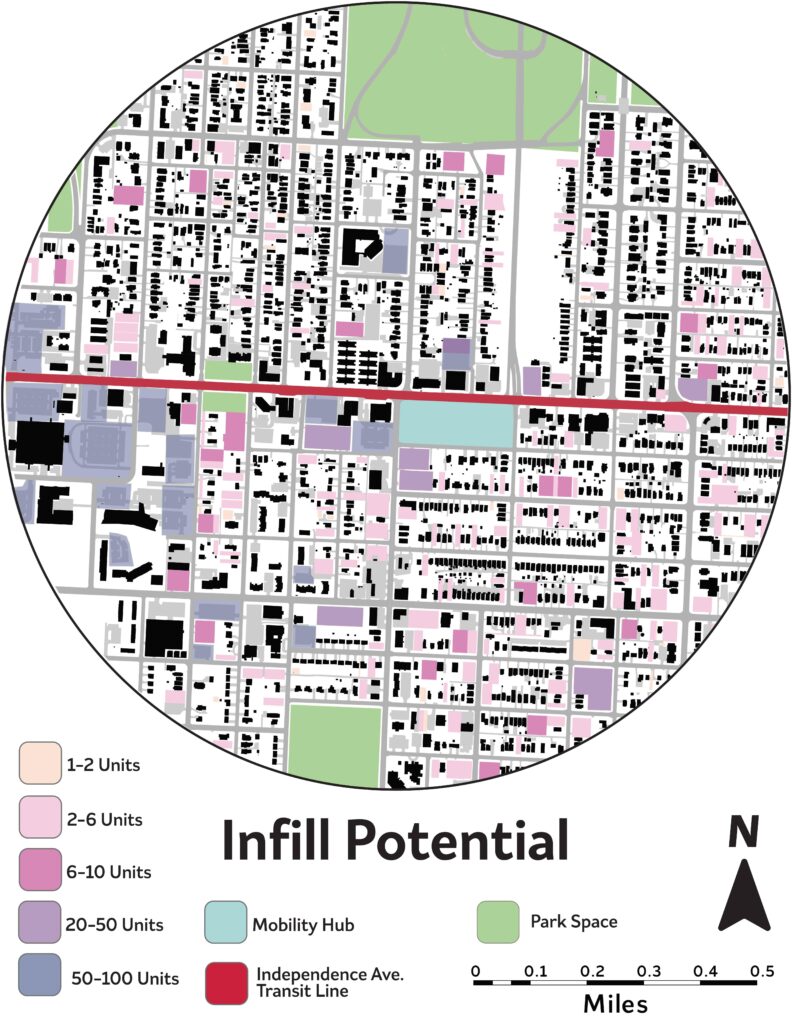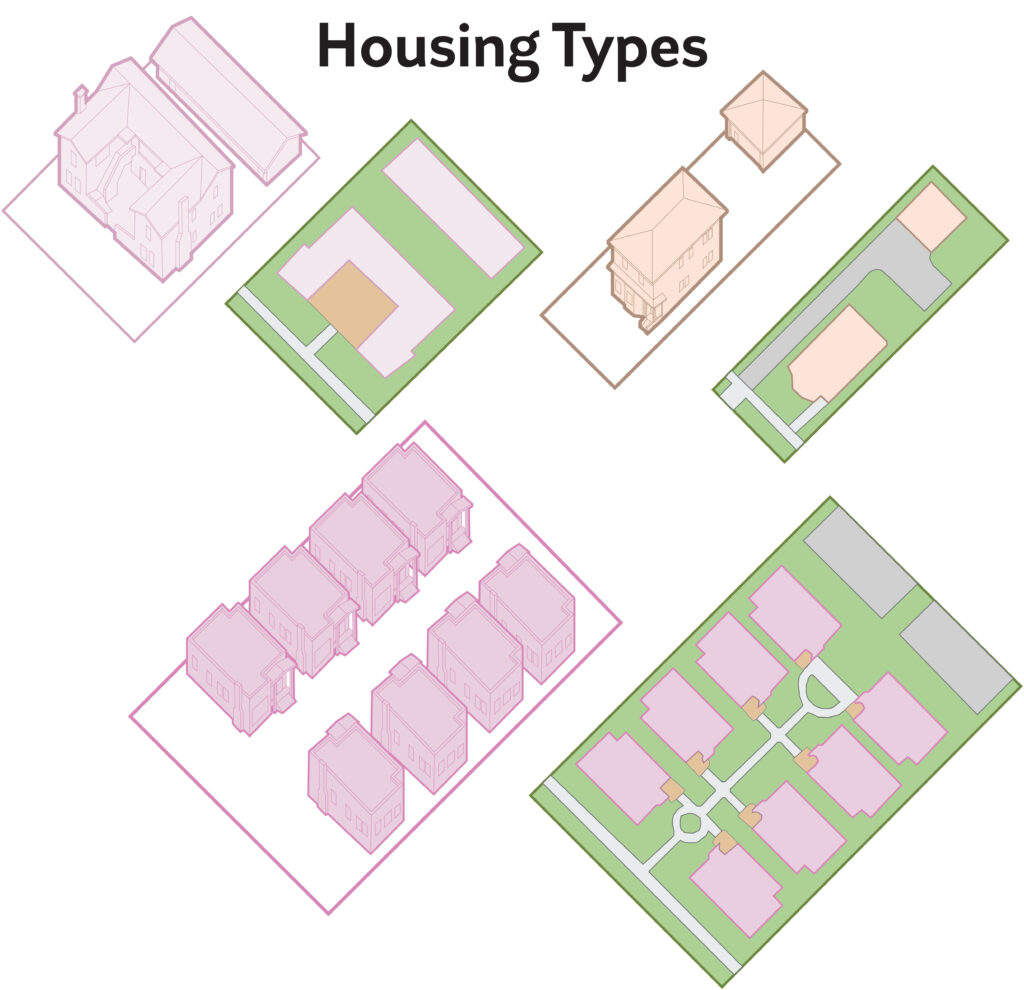Project KC Moves is a design for one section of the larger Bi-State Reinvestment Corridor Transit route. It combines the goals of sustainability, re-imagined housing, community strength, and improved mobility in a design centered around a mobility hub at the intersection of Independence and Prospect Ave.
What is the Bi-State Corridor?

The Bi-State Reinvestment Corridor is a project created by Missouri Representative
Emanuel Cleaver II and Kansas Representative Sharice Davids using federal money from Bipartisan Infrastructure Deal. The main goal of the project is to create a rapid transit line from one side of Kansas City, to the other. Along with this transit line, this project provides an opportunity to invest in our city; specifically, to improve transportation, housing, workforce development, and green infrastructure. Project KC Moves is one part of the larger Bi-State Reinvestment Corridor.
The goal of Project KC Moves is to design one of the 10 potential mobility hub sites identified in the corridor. Along with the creation of the core transit stop, Project KC Moves also design the structure of development as is spreads throughout the corridor. This includes reimagining housing, Independence Avenue, and mobility in the area.
Existing Community

The project area centers around the intersection of Independence Ave. and Prospect Ave, and the half mile radius around it. The existing neighborhood is unique in that it is already densely populated and heavily developed. The area contains many churches, schools, parks, and small businesses.

The vision for Project KC Moves is to combine the existing assets of the neighborhood with the resources of the Bi-State Sustainable Reinvestment Corridor to create a walk-able area well connected with different modes of transit.
Mobility Hub

Some of the center features of this mobility hub include a combination Post Office and Transit Stations. The station will function as a normal post office, but also hire someone to be in charge of the mobility, as well as answer any questions about transit. On either side of the station are small commercial shops, including a bike repair shop, and a sandwich and cafe, encouraging people to fully inhabit the space. Below that is a large child care facility to support families in the area. Below that is a 30 unit apartment building model after the Pendleton Arts Block, just a couple blocks away from this development. The central area of the mobility hub acts as a park space to be used by anyone in the neighborhood, whether they be waiting fro transit or not.
Independence Ave.


Outside of the mobility hub, Project KC Moves invests in a larger section of Independence Avenue. After the twenty year implementation period, Independence Avenue will have many more commercial buildings right on the street, creating a more coherent pedestrian experience. Because of the importance of considering the needs of the community, Project KC Moves uses existing buildings wherever possible, and always draws inspiration from the neighborhood.

Along with the building morphology, Project KC Moves also invests in the street infrastructure, ending with a final design including a single, two-way bike lane and two bus only lanes, reducing the car traffic down to just one lane per direction. While this is an ambitious plan, its implementation would truly get to what it means to be multi-model, and would give the freedom to residents to choose their form of travel.
Housing Strategy

Project KC Moves’ housing strategy begins by highlighting all the empty lots with the half-mile radius of the mobility hub, and then sorting them by size. For each size, Project KC Moves suggests a different housing infill type. Implementing this strategy would increase the number of units in the area by over 2000, creating the kind of density needed to support a transit line.

By 2044, the Independence and Prospect Ave. area will complete its infill process. Project KC Moves uses several different housing footprints to fully utilize the space and to increase density. By only utilizing the densest housing Project KC Moves keeps costs down in utilities and land acquisition.
Conclusion
As places with Kansas City are faced with more challenges from climate change, they will need to look towards projects, like Project KC Moves, that allow people to live more sustainably. Projects that overall increase density, encourage use of transit, and create greater connectivity will be the key to transitioning to a greener city. Project KC Moves commits to these challenges and implements their solutions at a human scale.